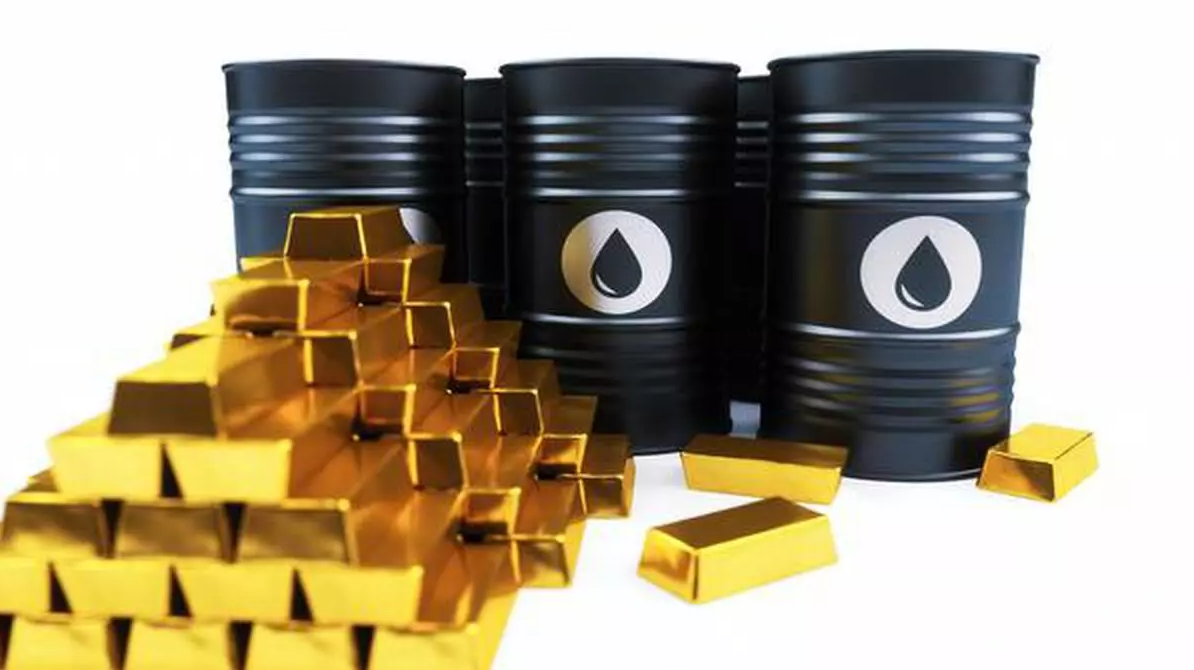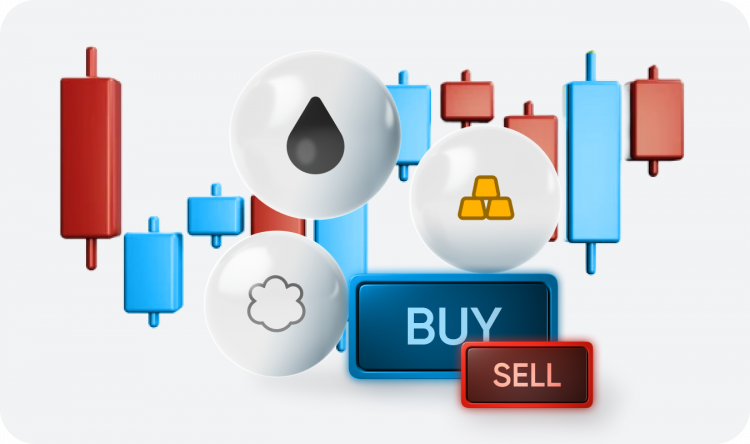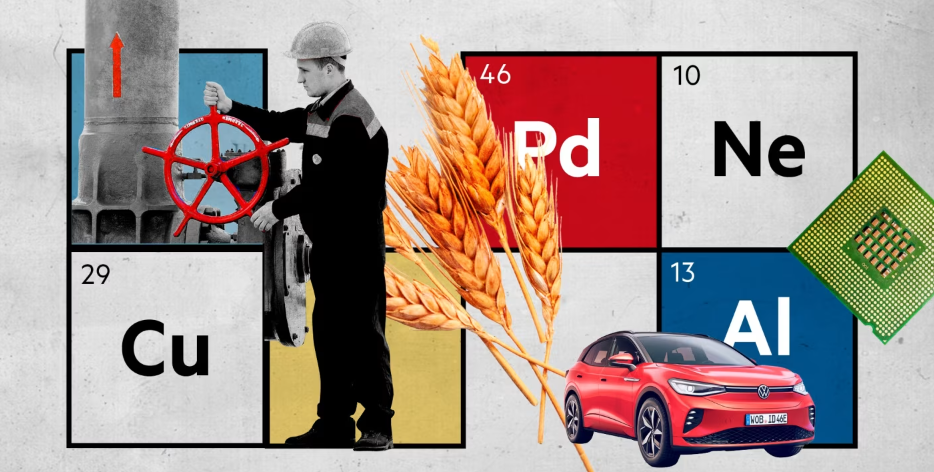Inflation ran HOT in 2022 and 2023. According to data from the International Monetary Fund, global inflation came in at an average of 7.8% for both years – twice the historical average of 3.9%.
Carrying a grocery bag is stressful as you head to the checkout counter. But that’s not all as the impact extended beyond your shopping experience to affect your investment portfolio.
In times of high inflation, the responsibility to counteract it falls on central banks, leading to increased interest rates. Consequently, this has resulted in weakened corporate earnings and a decline in share prices. It’s likely that your investment portfolio witnessed a decrease in value over these two years.
The presence of risks is omni-present, and while they cannot be predicted, preparations can be made to safeguard your portfolio. One effective strategy involves using commodities as a hedge against inflation and interest rate risks.
Hence, we will delve into the concept of commodities and their pivotal role in risk management within your portfolio in this article.
1. What are Commodities?
A straightforward way to comprehend commodities is to envision building a house.
What essential components are required?
Concrete, steel, bricks, and various construction materials come to mind. These materials are categorized as commodities.
In a nutshell, commodities are raw materials that companies need to produce other more intricate products.
Across the globe, numerous markets offer a wide variety of commodities but they are usually categorized under 4 primary types:
- Energy: Crude oil, natural gas, coal.
- Metal: Gold, silver, copper, zinc.
- Livestock: Chicken, cows, lamb, seafood
- Agriculture: Cotton, coffee, rubber
The most heavily traded commodities globally are undeniably crude oil and gold.
Oil – lifeblood of economies
Crude oil, serving as the lifeblood of the global economy, fuels everything from cars to households.
According to data from the Energy Institute (formerly published by BP), crude oil makes up about 32% of total global fuel consumption and is the top fuel source. In the United Kingdom, crude oil is also the highest-consumed fuel source at 36% of total fuel consumption.
Two primary oil markets exist: the U.S. West Texas Intermediate (WTI) and Brent Crude Oil (Brent) in Europe, with both oil markets priced in USD per barrel.
WTI, based in Texas, United States, serves as the crude oil price benchmark for North America.
In Europe, Brent, originating mainly from the North Sea, is the predominant oil price benchmark globally.
Here are a few stocks that can take advantage of higher Oil prices: Rex International (SGX: 5WH), Dyna-Mac (SGX: NO4) and RH PetroGas (SGX: T13).
Gold – storage of value
Meanwhile, gold is often perceived as an alternative to traditional currencies. Throughout history, precious metals like gold, silver, and copper have been utilized as forms of money, with gold gaining prominence as the Gold Standard.
Investors often turn to gold in times of waning confidence in traditional currencies due to this enduring belief. Central Banks around the world are buying gold at a record pace in year 2022 and 2023, driven by geopolitical tensions and inflation.
Gold is an important component of central bank reserves because of its safety, liquidity and return characteristics – the three key investment objectives for central banks.
With that said, gold prices have surged to a 10-year record high on 12 January 2024.
A few counters that can benefit directly from higher Gold prices are SPDR Gold Shares (SGX: O87) and CNMC Goldmine (SGX: 5TP).
2. How Owning Commodities Can Be a Smart Move
When it comes to managing your investments, having commodities like oil and gold, in your portfolio mix is a good idea.
Commodities help spread the risk (diversification) and it acts as a shield against the rising prices that come with inflation.
Let me explain more below.
i) Low Correlation with Traditional Assets
Commodities often exhibit low or negative correlations with traditional asset classes such as stocks and bonds.
Integrating commodities into a portfolio can reduce overall portfolio volatility by providing a counterbalance to the performance of equities and fixed-income securities.
ii) Protection against Inflation
Commodities, particularly those in the energy and agricultural sectors, have demonstrated a historical tendency to perform well during inflationary periods.
Their tangible nature and real asset status make them attractive as a hedge against the erosion of purchasing power caused by inflation.
iii) Early Indicators and High Return Potential
Shifts in commodity prices frequently signal upcoming changes in the broader economy. The prices of commodities often mirror the onset of inflationary pressures, rendering them valuable as early indicators.
On this note, commodities have been the best-performing asset class in the last three years as of 31 March 2023 with the BCOM index outperforming both the S&P 500 and the Bloomberg Global Aggregate Index.
In a nutshell, given their capacity to serve as a hedge against inflation and a potential booster of returns, commodities merit serious consideration for a significant long-term allocation in portfolios.
3. What Affects Commodity Prices?
But what actually moves commodity prices?
Commodities prices are driven by the forces of supply and demand – a simple to understand but hard to master concept.
In simple terms, supply-demand dynamics mean that if you want more of something (demand), you will be more willing to pay more for it and vice versa. If there is more supply of a product, the supplier is more willing to sell at a lower price and vice versa.
That said, there are much more factors involved but we think here are the 5 recent trends you should look at:
#1 Demand from Global Economy
The better the global economy does, the higher the demand for commodities and vice versa.
In particular, two big countries will drive demand for commodities – the United States and China. Both countries make up about 44% of the global economy in 2023, and they are voracious consumers of commodities.
#2 Geopolitical Conflicts
Conflicts in countries that produce commodities could cause less supply to the global markets.
The Russia-Ukraine conflict resulted in a severe shortage of crude oil, natural gas, soybeans, and fertilizers in 2022.
#3 Production Decisions by Commodity Organizations
The Organisation of Petroleum Exporting Countries (OPEC) is an organization made up of countries that produce crude oil in the world.
Every month, they will come together to discuss how much crude oil they should produce. By reducing supply, they can increase prices to get higher profit margins. By increasing supply, they can sell more but have lower profit margins.
Other commodity organisations like OPEC will also set production targets.
#4 Unexpected Events
Weather is a prime example of unexpected events. No one can predict the weather. Droughts, floods, storms, and hot and cold climates can cause a shortage of agricultural products.
A sudden blockage in one of the major shipping routes could also disrupt the commodity markets like the one at the Red Sea.
#5 Competition and Government Policies
As countries are transitioning to net-zero carbon by 2050, it will inevitably lead to lower demand for fossil fuel commodities like crude oil, natural gas and coal.
This potentially means that fossil fuel commodities’ prices might decline in the long term.
4. Finding the Right Broker for Commodity Trading
There are plenty of brokers to choose from and choosing the best broker for commodity trading is a critical decision for any investor.
And one platform that stands out is Capital.com as it is a trusted broker and offers multiple features and attractive promotions.
Capital.com provides an all-round trading experience with sleek technical indicators, live market updates and various chart formats. Be it on desktop (browser), iOS or Android apps, the accessibility ensures you can engage in comprehensive trading analysis anytime, anywhere.
Capital.com enables you to trade on commodities using CFDs. This means that you never own the underlying commodity, so you’ll never have to take delivery of it. You can also usually use CFDs to take a position on a commodity for less than the price of buying it outright, thanks to leverage. However, leverage can result not only in large, fast gains but also in large and fast losses, so it’s important to understand how CFDs work before trading.
If you are looking for a reputable broker to get started on commodity trading, click on the image right now:
Disclaimer: This sponsored post is brought to you by Capital.com to provide valuable insights.
The views expressed herein are solely those of the author and do not necessarily reflect the opinions of Capital.com.





[…] Source link […]
[…] Source link […]